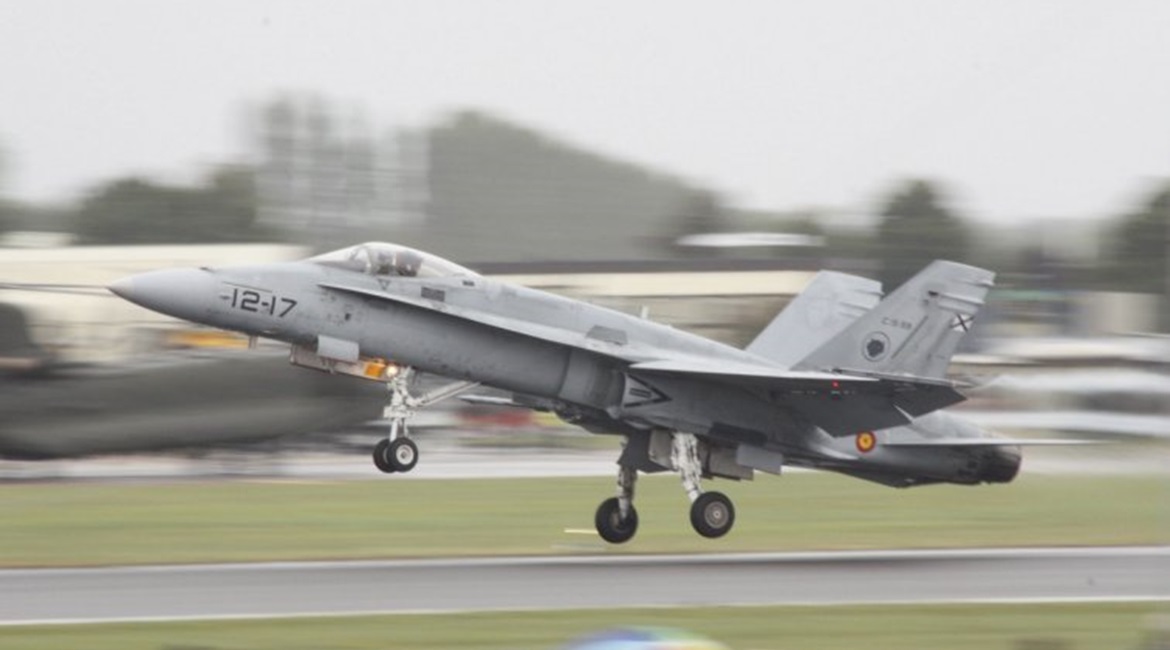
Spain is to take over responsibility for leading NATO’s Baltic Air Policing (BAP) mission, with four Boeing EF-18M Hornet fighters recently arriving at Šiauliai Airbase in Lithuania.

Spanish Hornet fighters are to lead the next rotation of the NATO Baltic Air Policing mission, alongside British Typhoons and French Mirage 2000s. (Jane’s/Gareth Jennings)
From 1 May the Spanish fighters of Wing (Ala) 15, based at Zaragoza, will be supported by UK Eurofighter Typhoons also operating out of Šiauliai Airbase, and by French Dassault Mirage 2000s flying from Ämari Airbase in Estonia.
These three nations will conduct air policing of Estonian, Latvian, and Lithuanian airspace through to the end of August, at which time they will be relieved by other NATO members.
The NATO BAP mission is part of a wider enhanced air policing mission that includes the recently constituted southern air policing mission based in Romania, as well as similar missions that cover Albania, Belgium, Iceland, Luxembourg, the Netherlands, and Slovenia.
Controlled by Headquarters Air Command (HQ AIRCOM), located in Ramstein, Germany, the enhanced air policing missions are directed by one of two combined air operation centres (CAOCs). Those missions based north of an imaginary line that transects Europe along the Alps are directed by the CAOC at Uedem in Germany, while those located south of this line (including the Black Sea and the Mediterranean Sea) are directed by the CAOC at Torrejon in Spain.
While interceptions between Russian and Western warplanes effectively came to an end with the end of the Cold War in 1991, they had been gradually rising since 2007 when Russian president Vladimir Putin reconstituted long-range bomber patrols in one of the first signs that relations were not quite as cordial as they had been.
Looking to read the full article?
Gain unlimited access to Janes news and more...